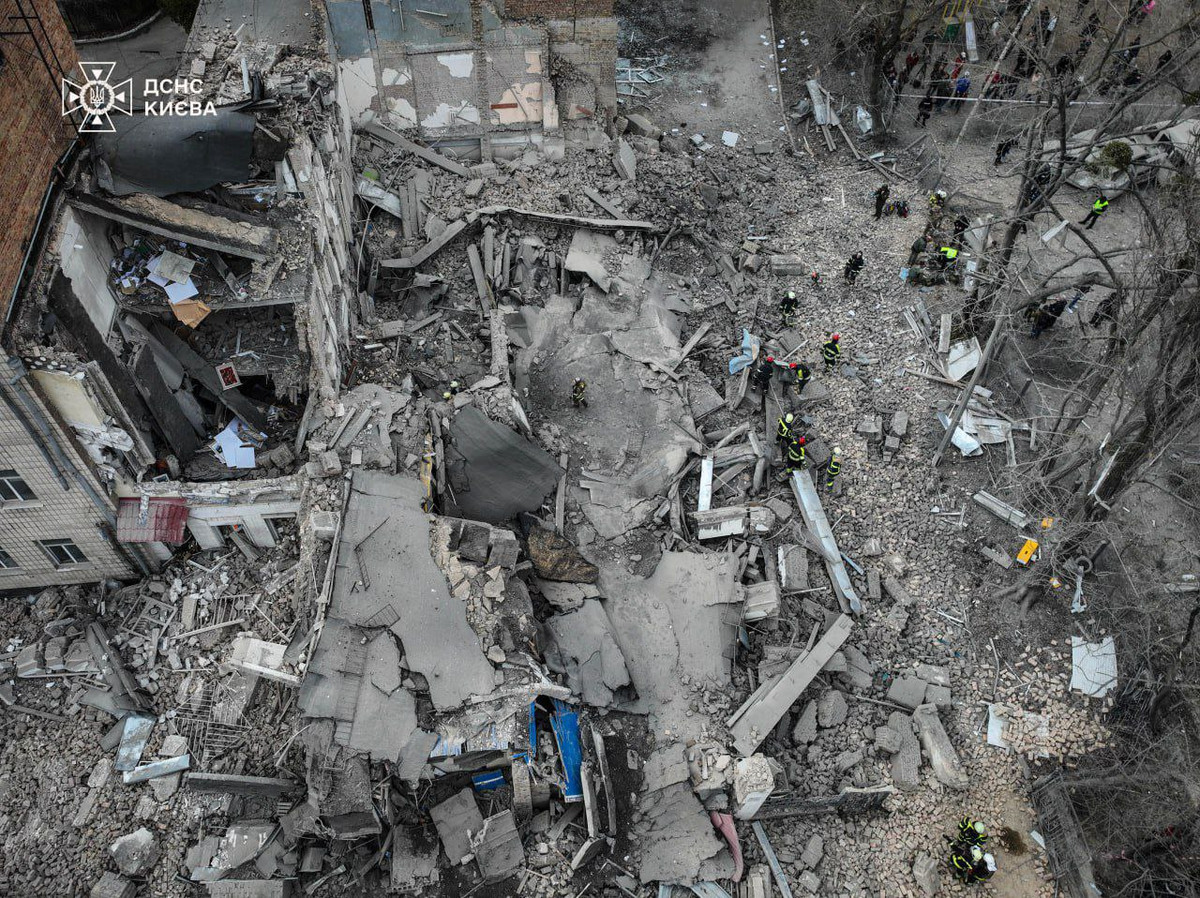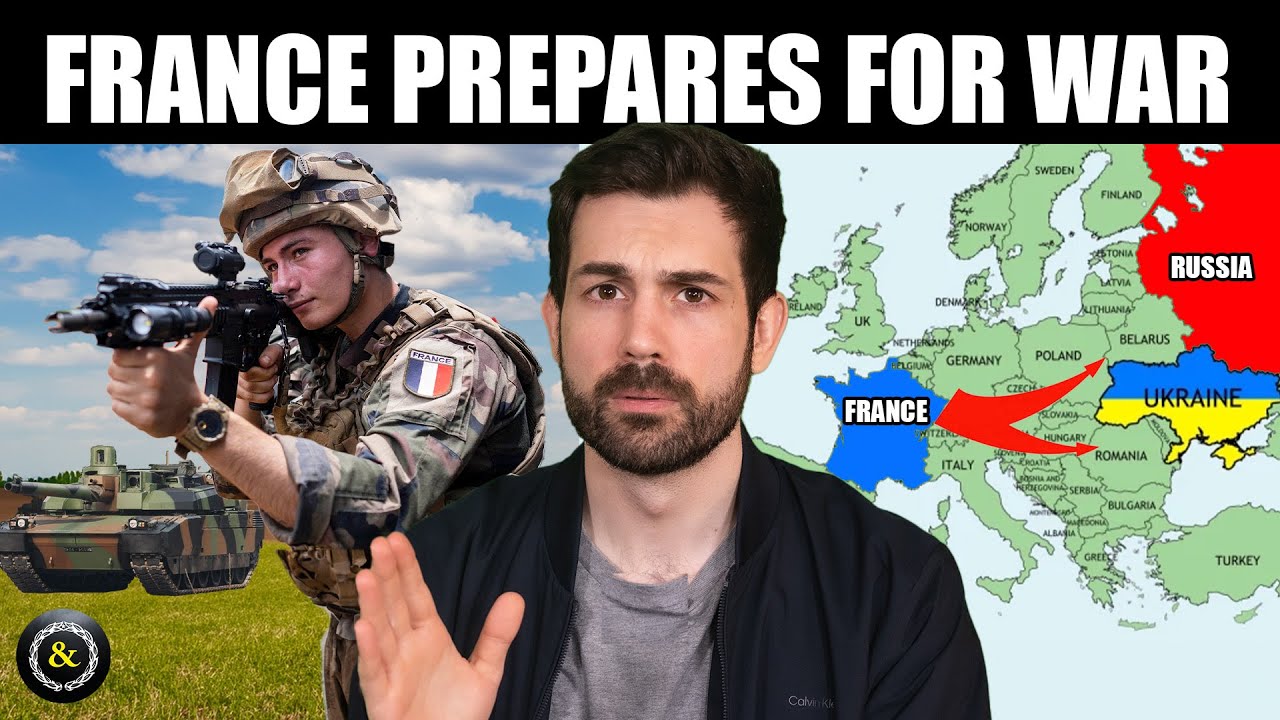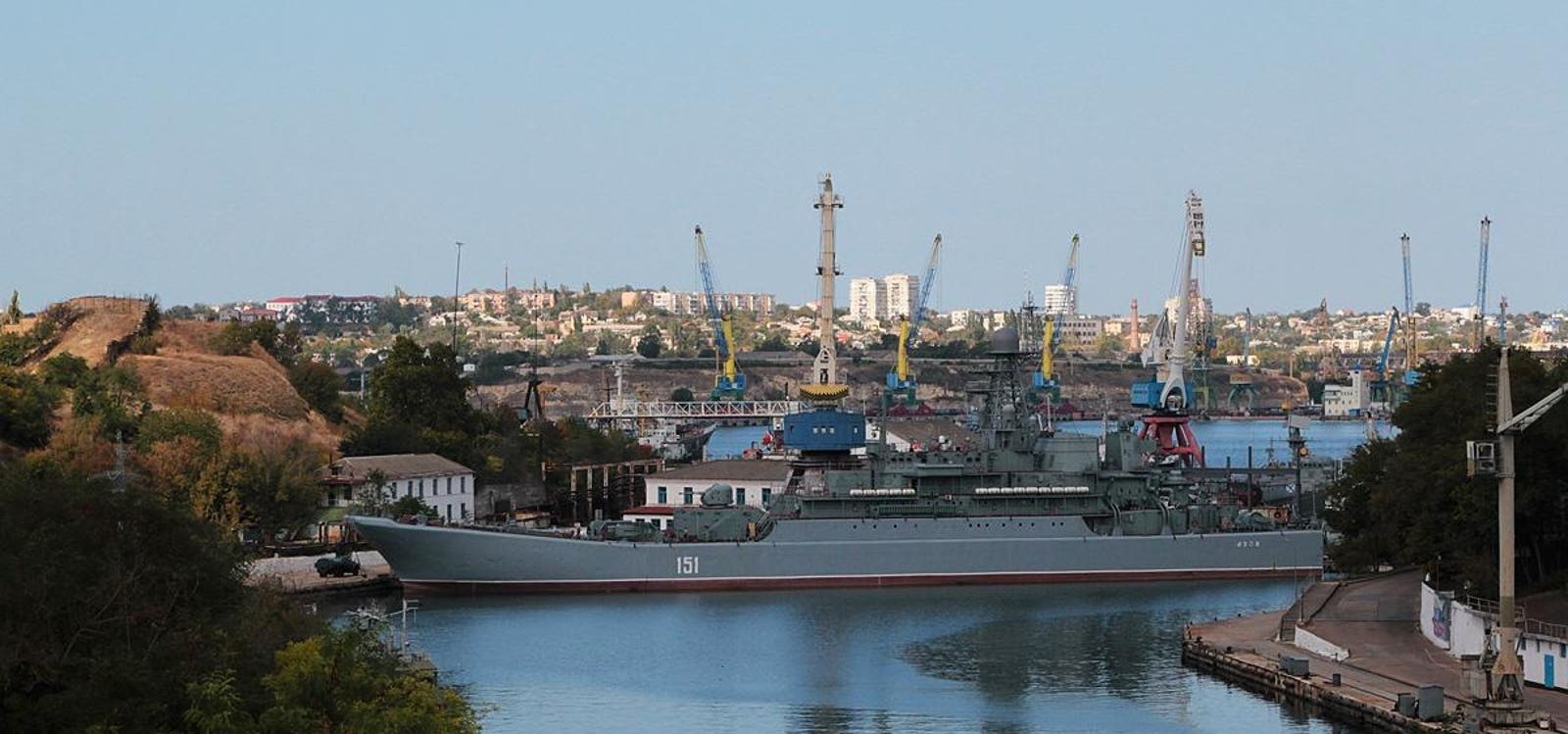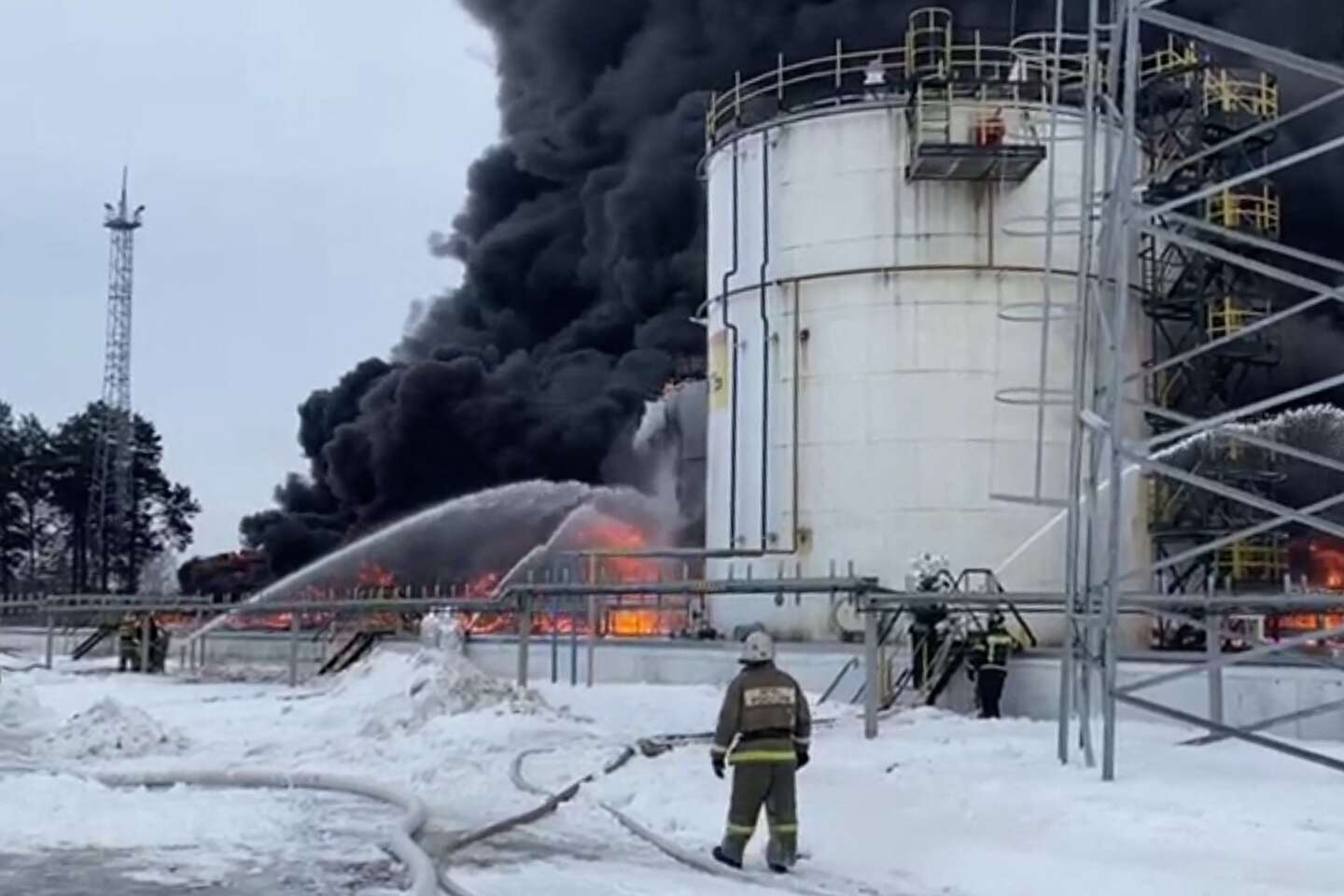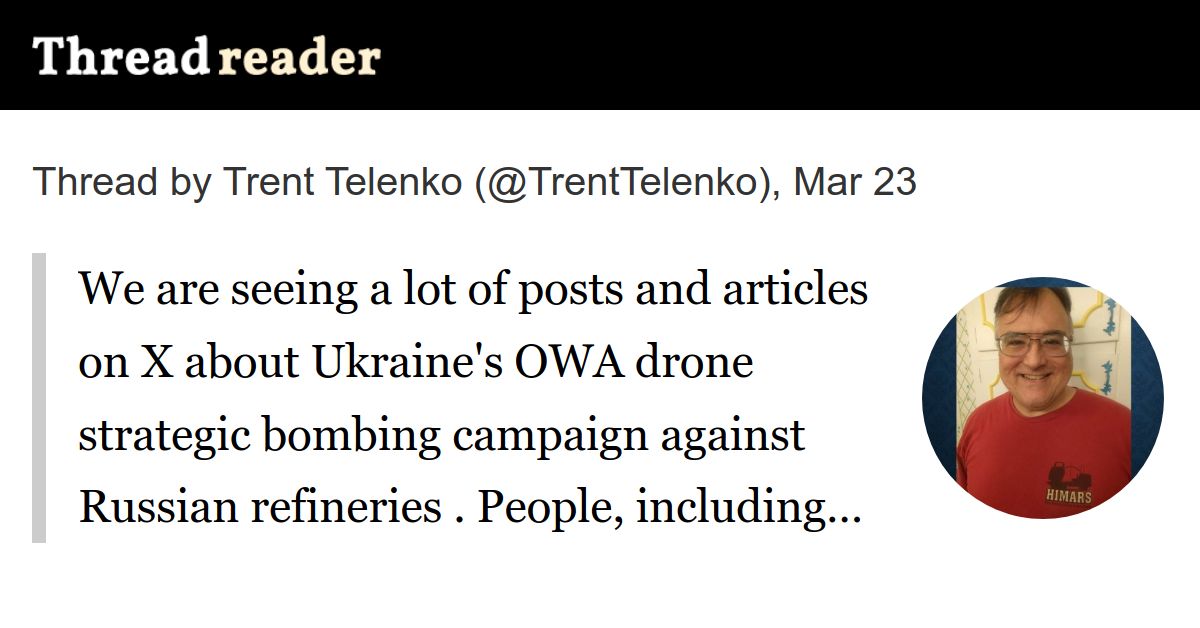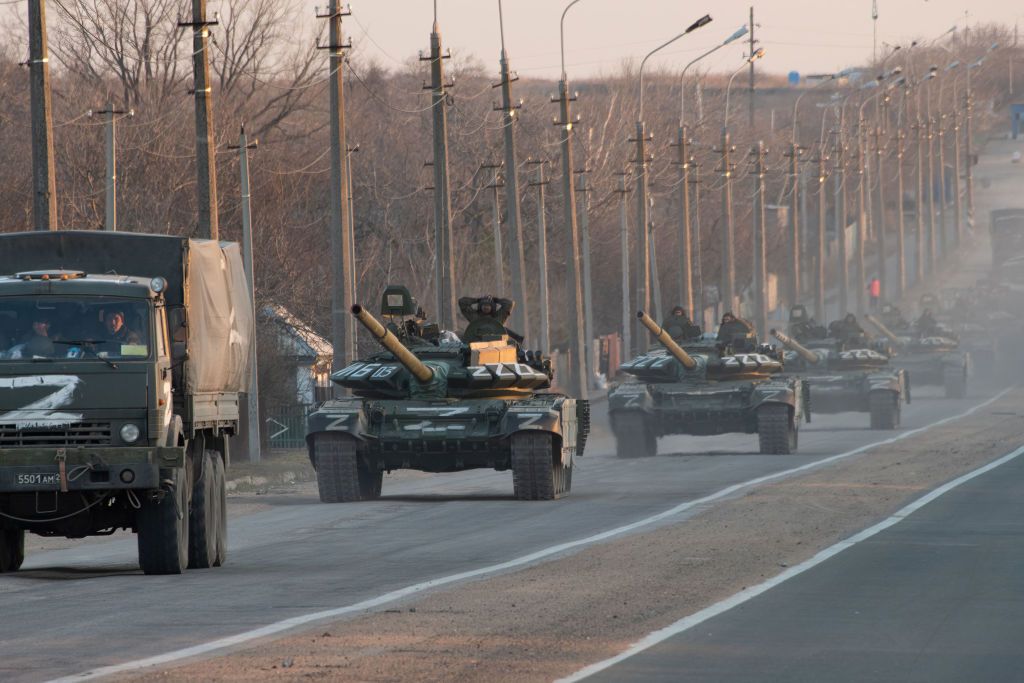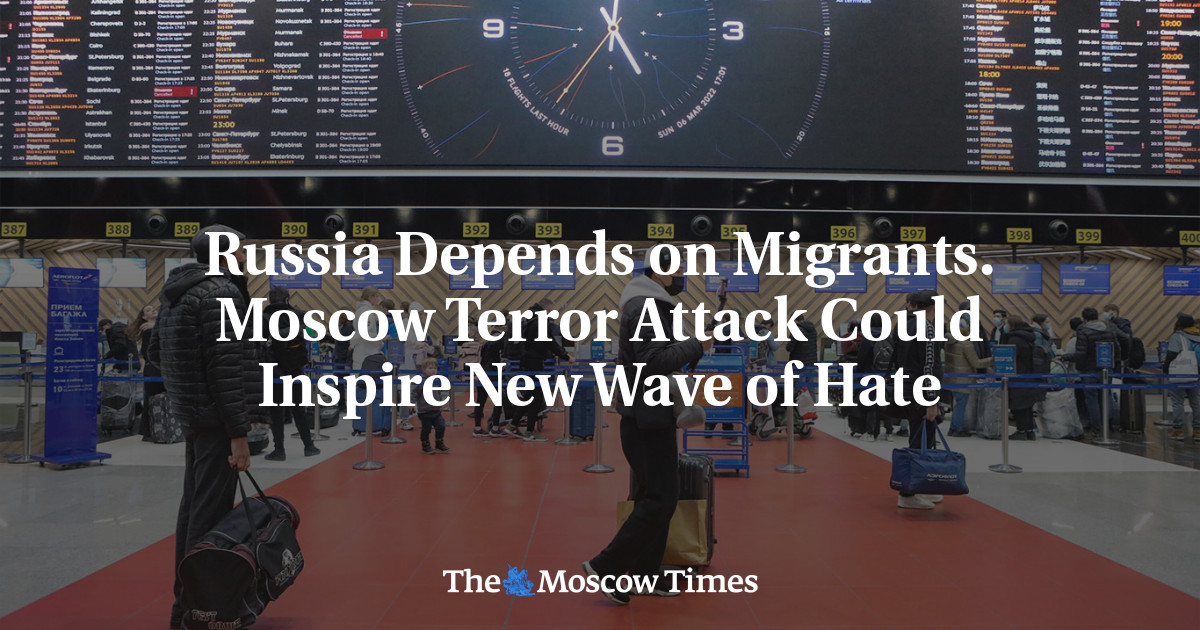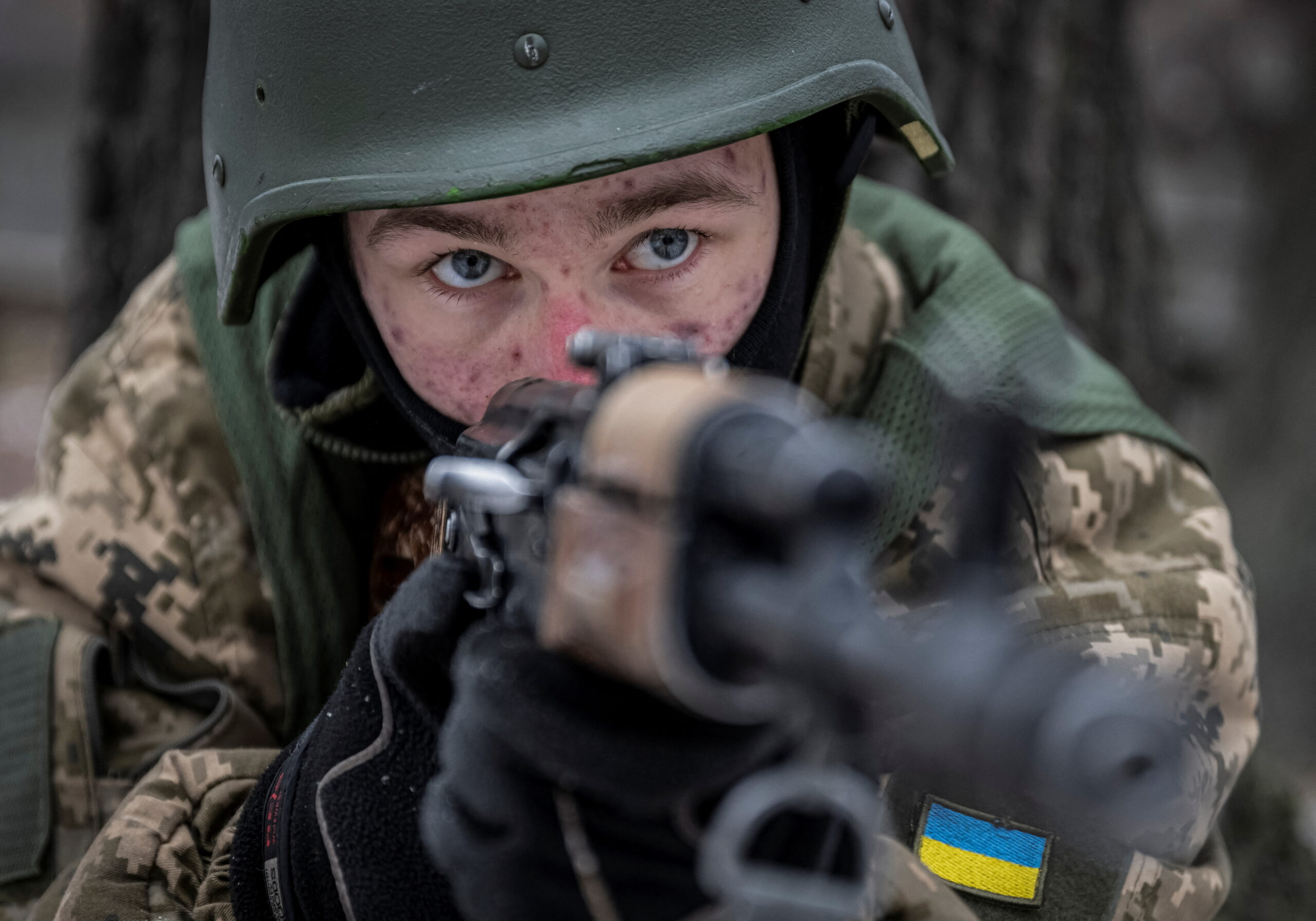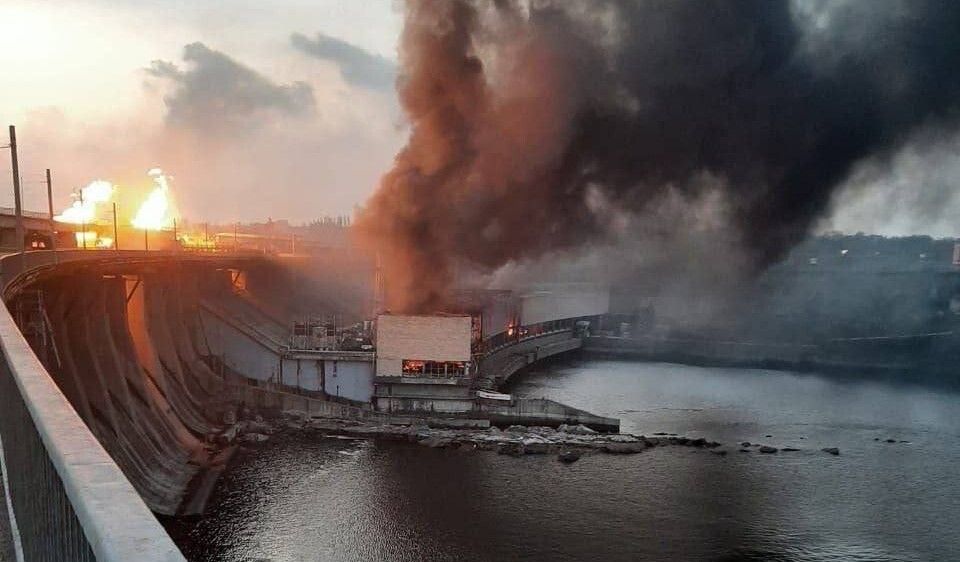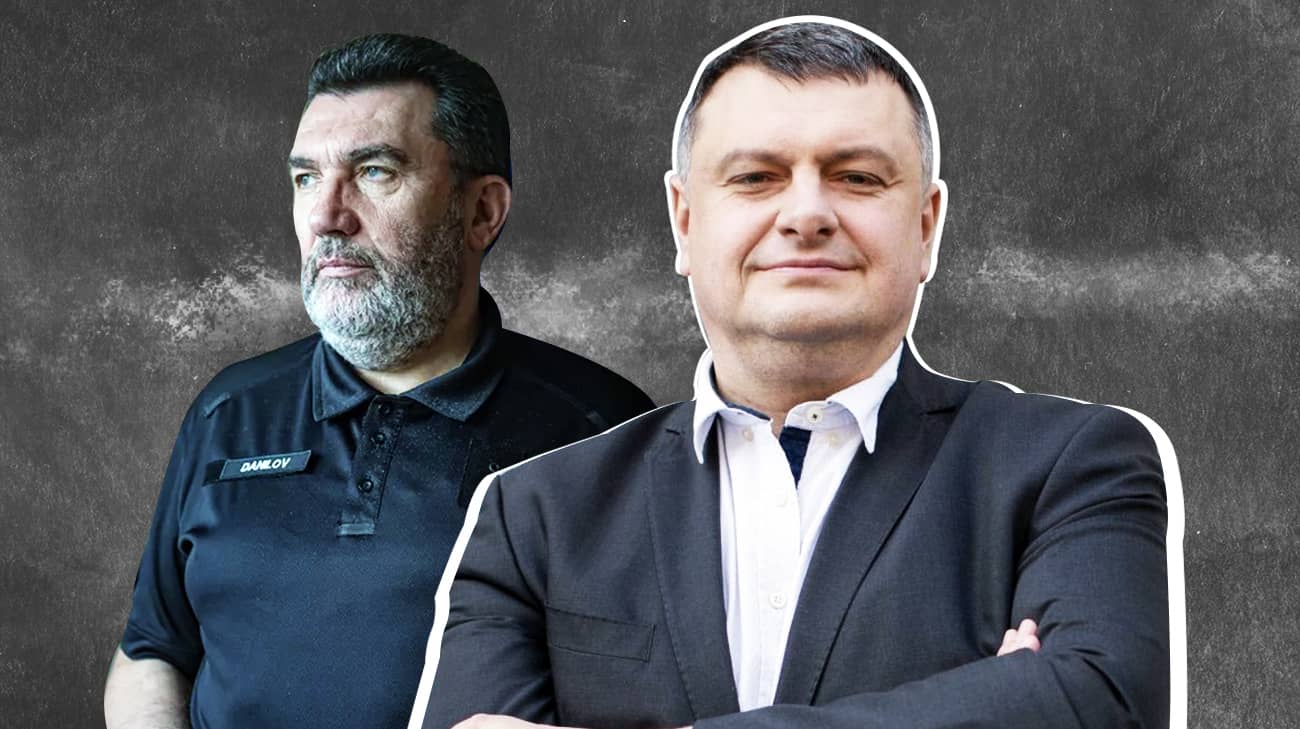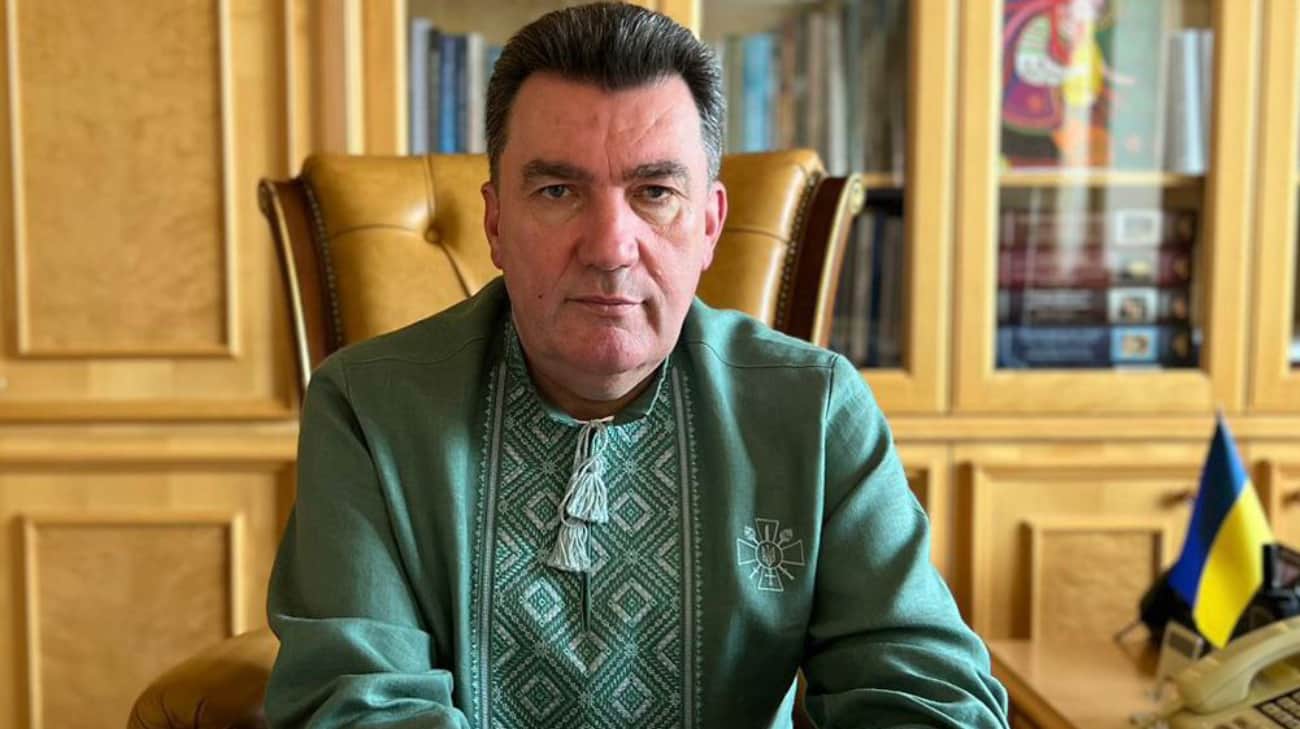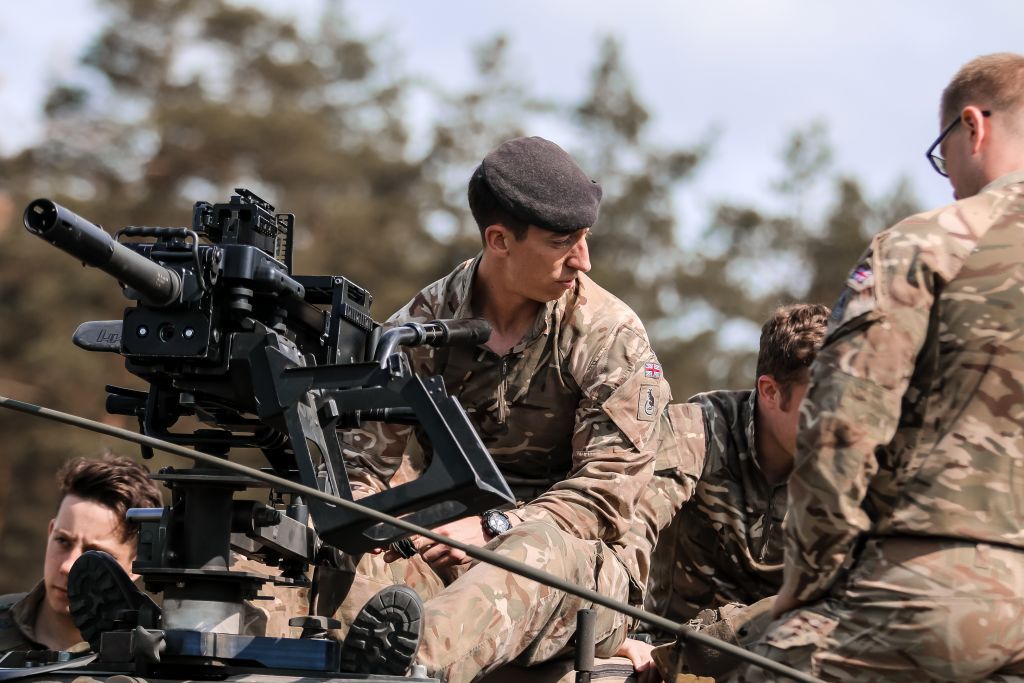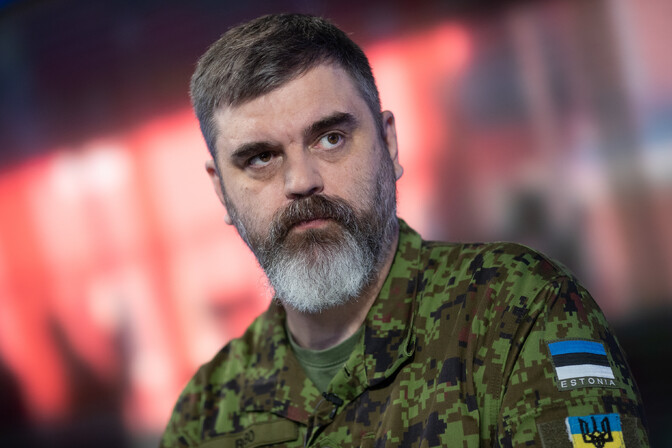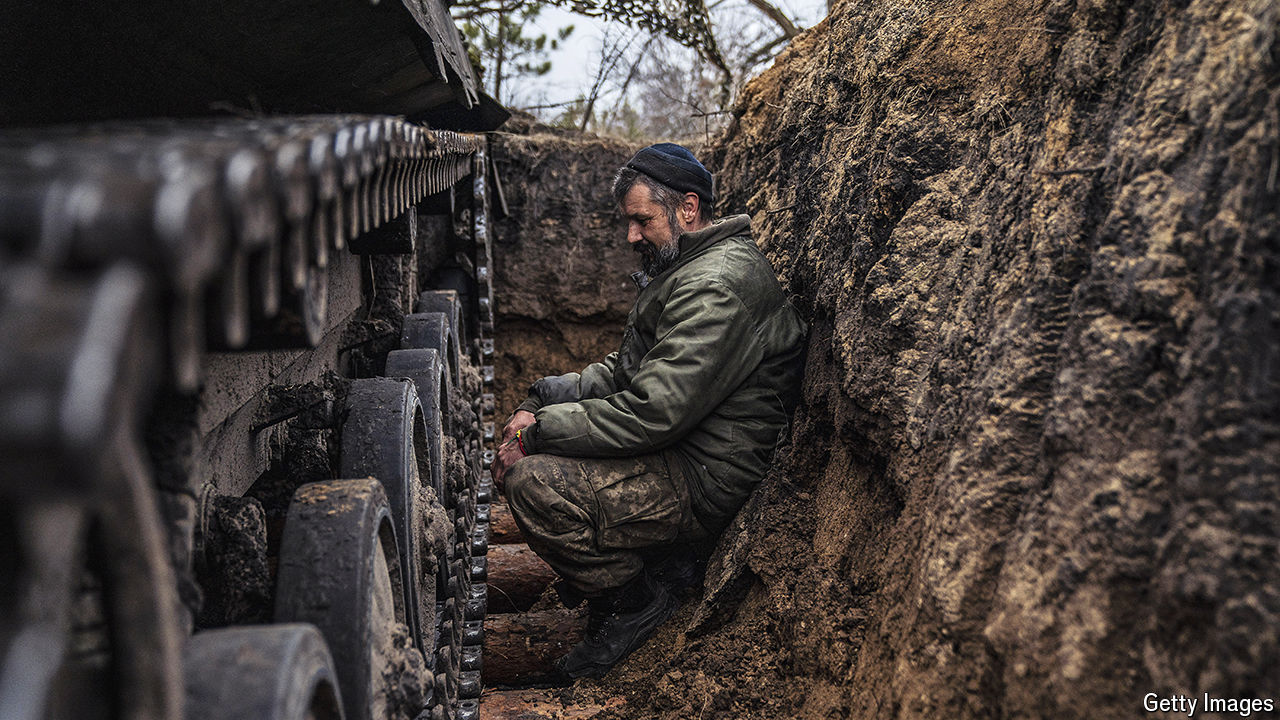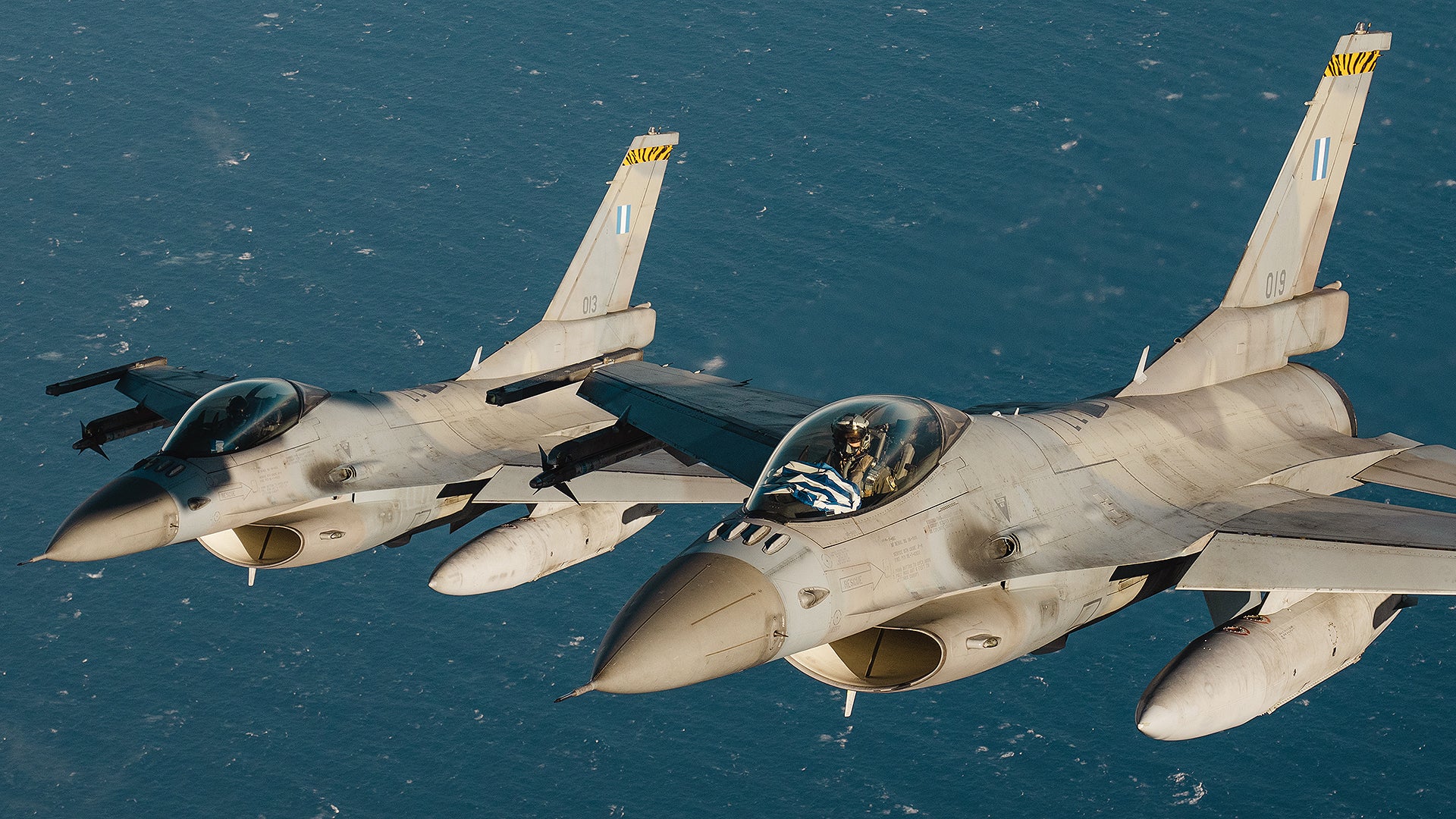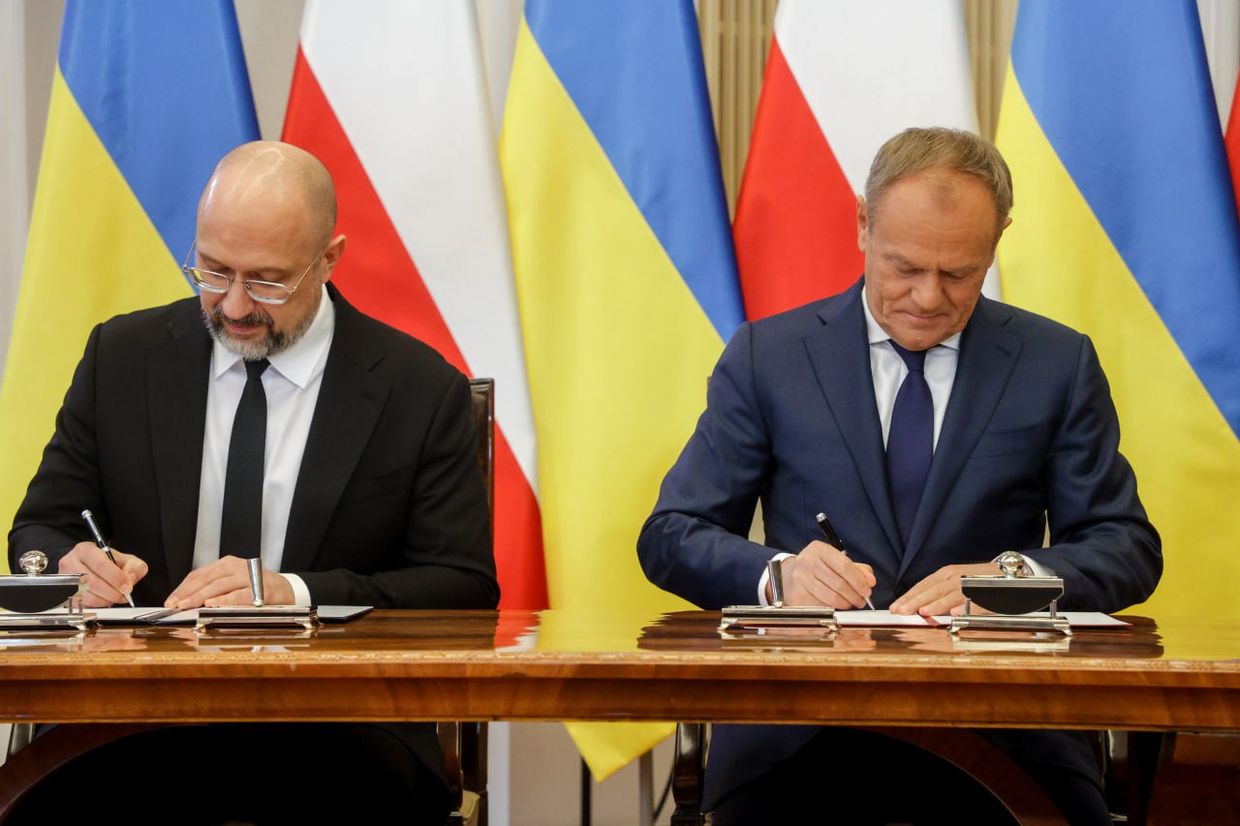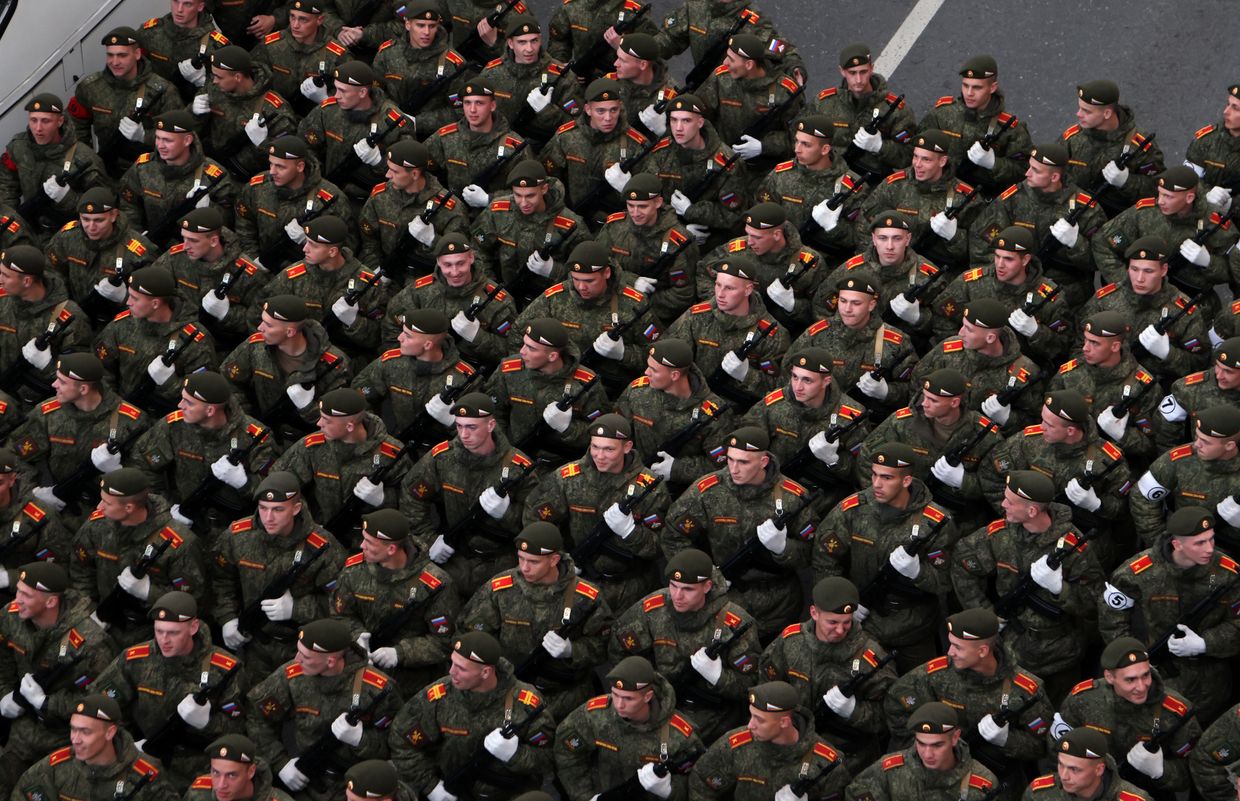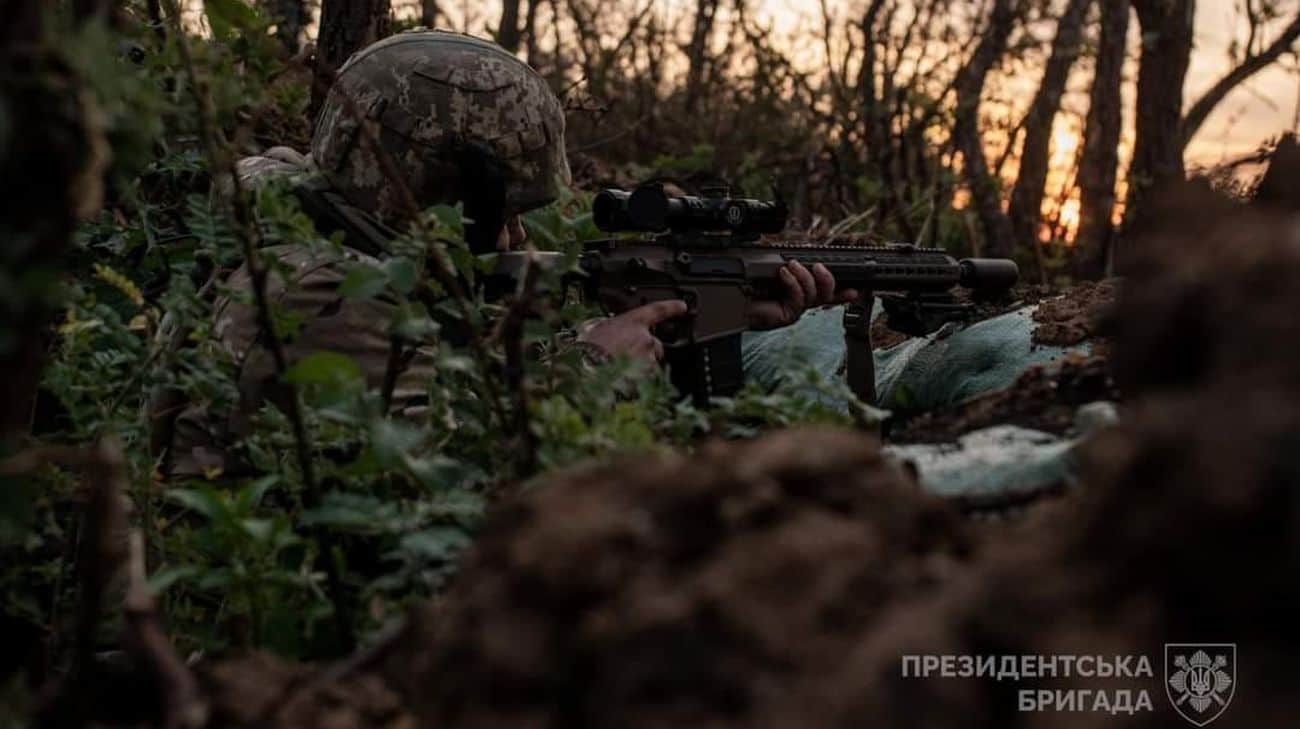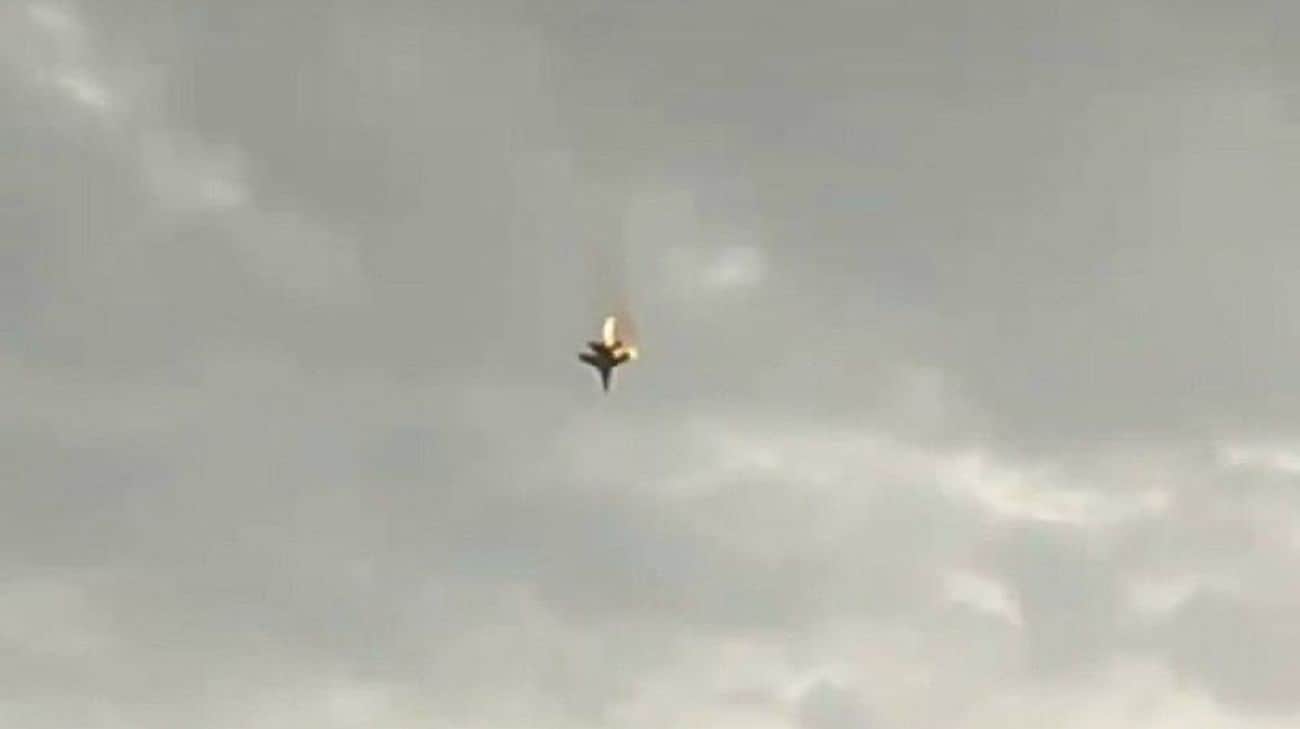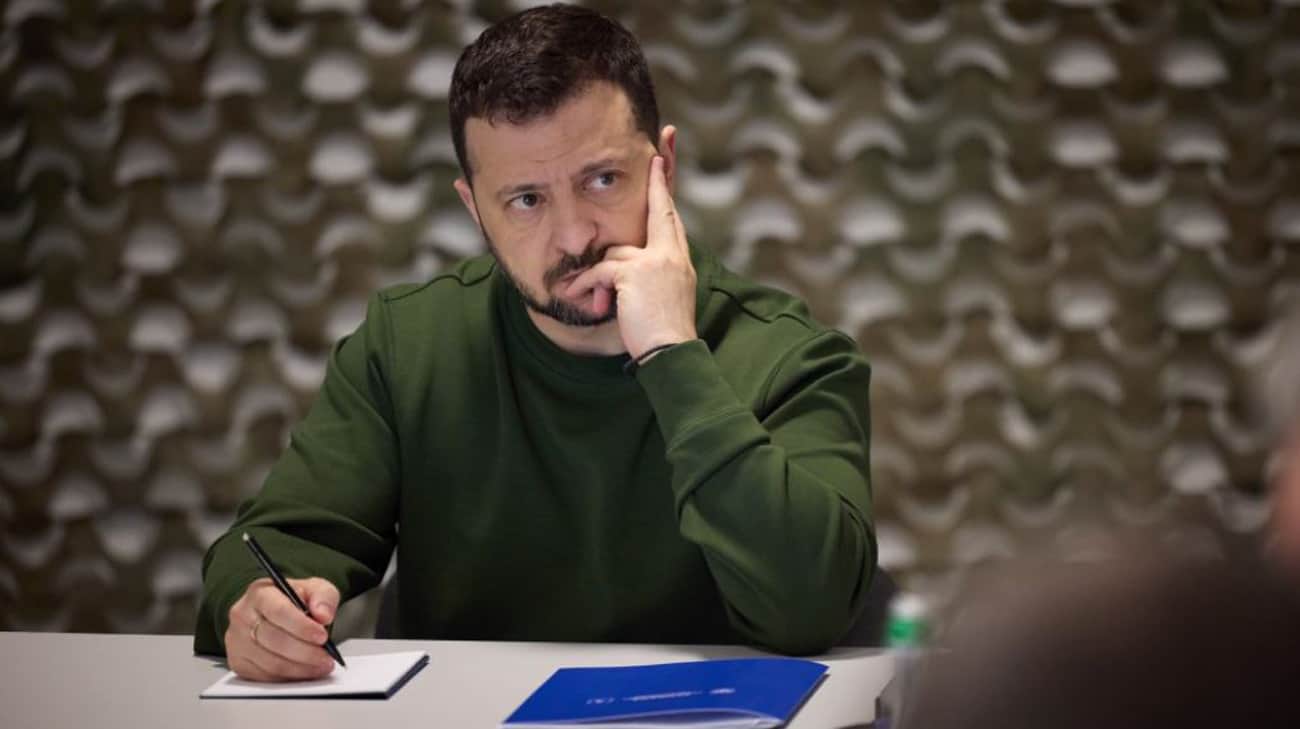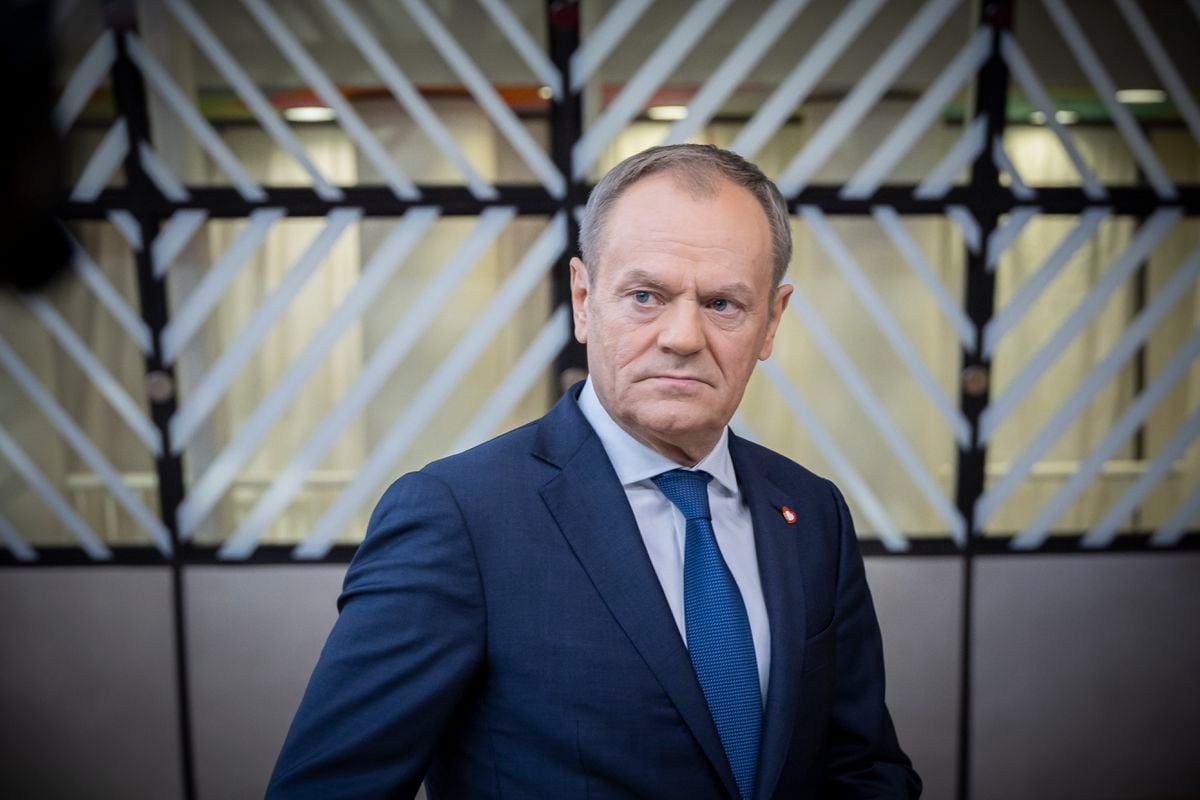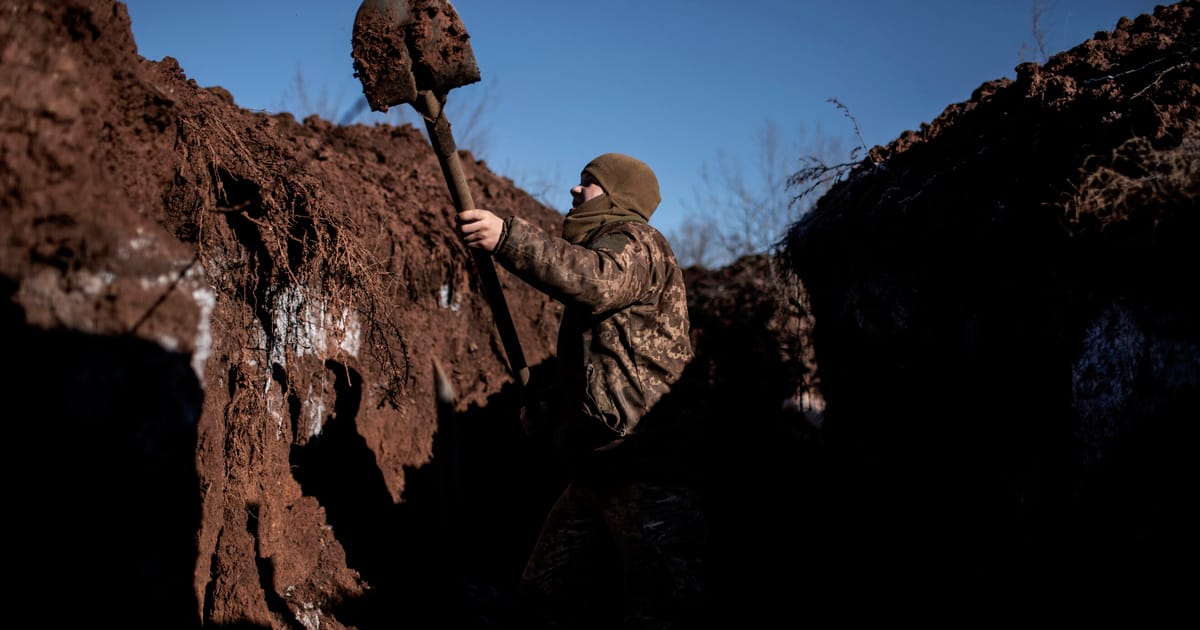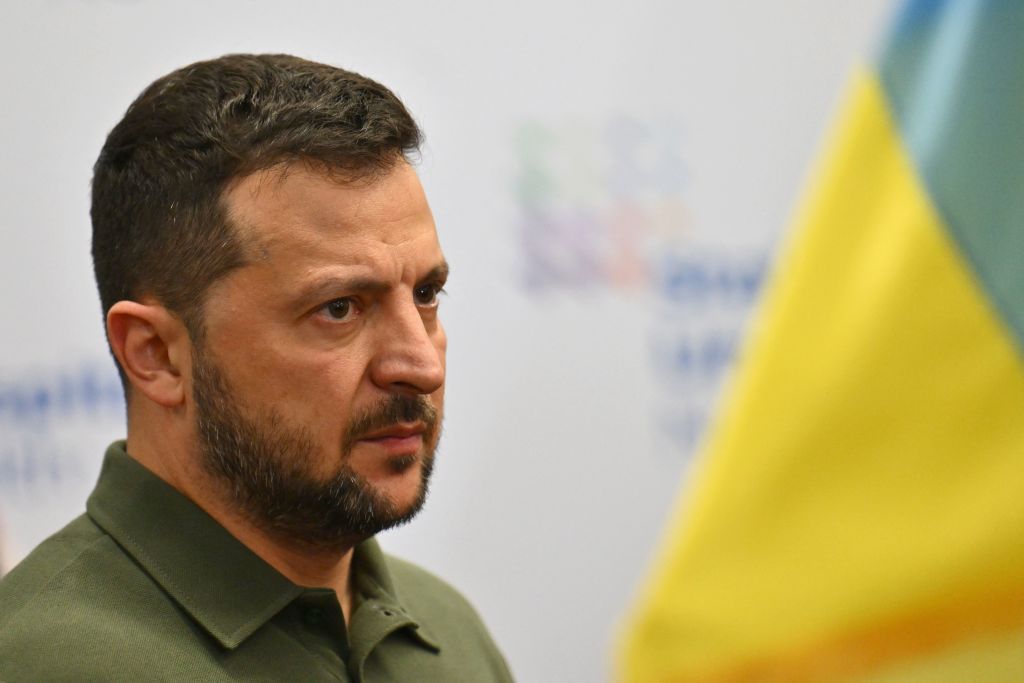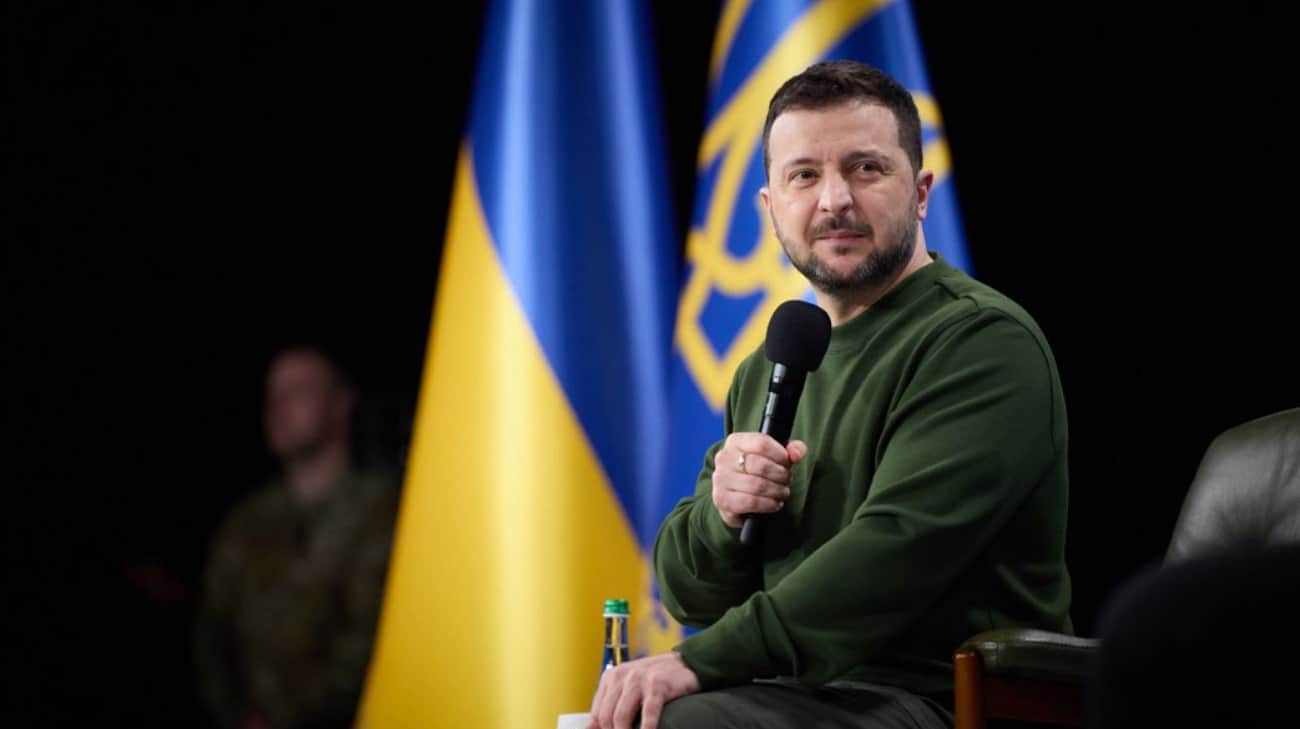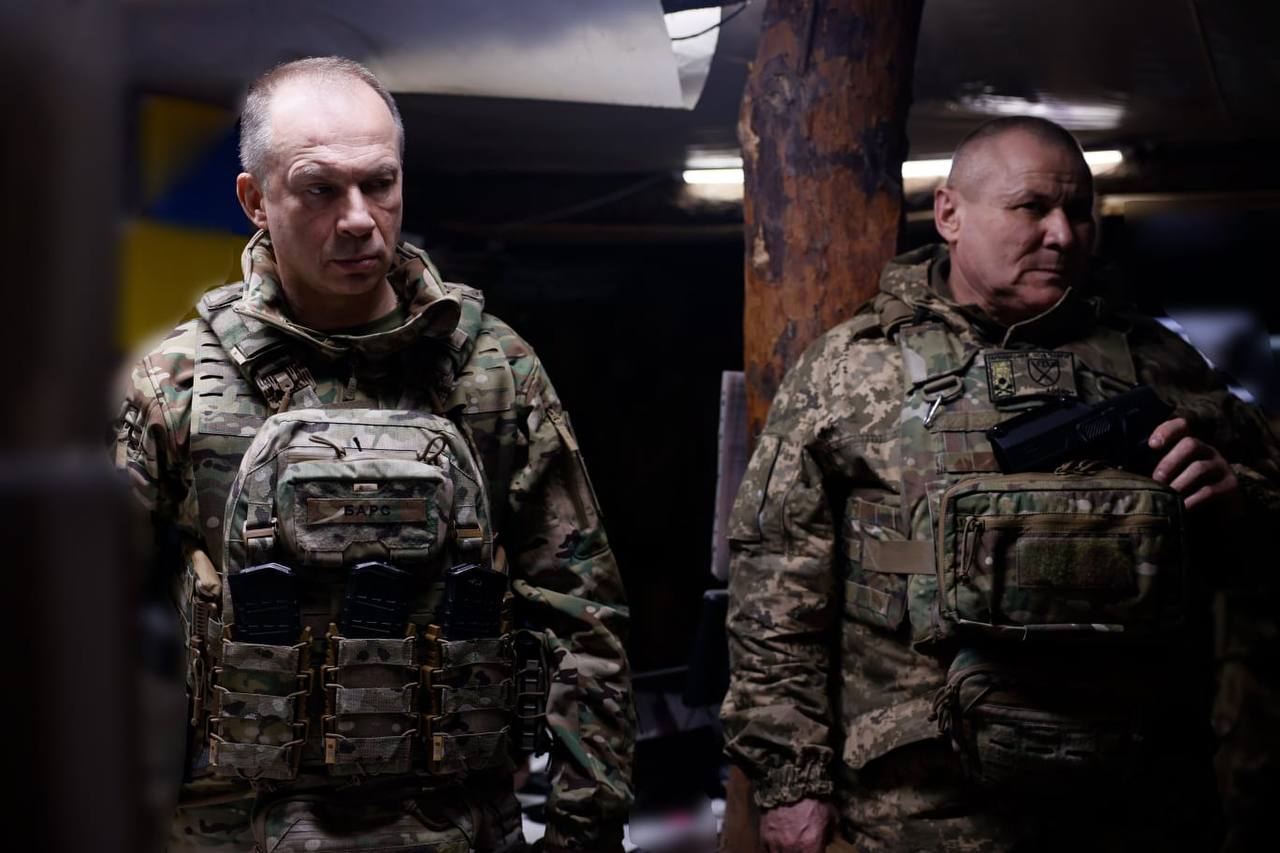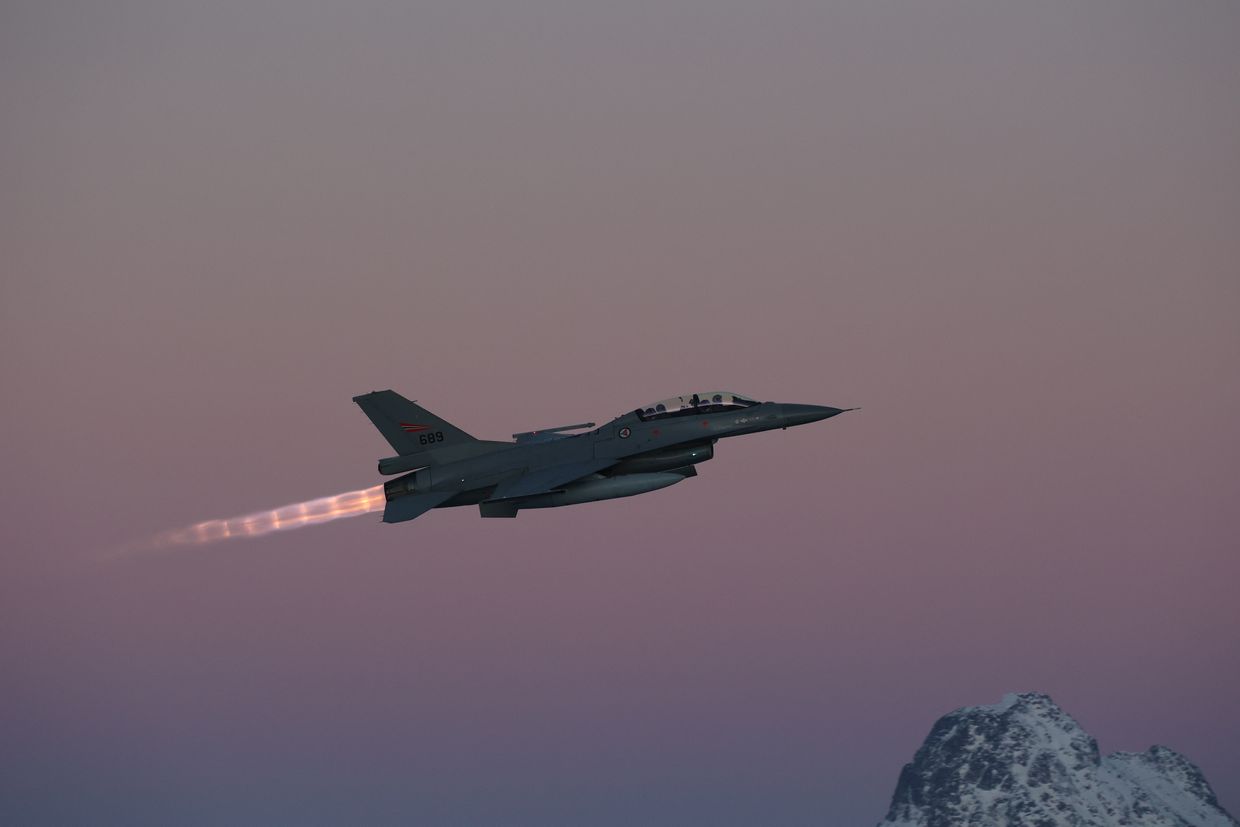The congressional delay in approving a $60 billion military aid package has been costly for Ukraine, Zelensky said. The military has been unable to plan future operations while legislators squabbled for nearly six months. He warned that hard-pressed Ukrainian forces might have to retreat to secure their front lines and conserve ammunition.
“If there is no U.S. support, it means that we have no air defense, no Patriot missiles, no jammers for electronic warfare, no 155-milimeter artillery rounds,” he said. “It means we will go back, retreat, step by step, in small steps.”
To describe the military situation, Zelensky took a sheet of paper and drew a simple diagram of the combat zone. “If you need 8,000 rounds a day to defend the front line, but you only have, for example, 2,000 rounds, you have to do less,” he explained. “How? Of course, to go back. Make the front line shorter. If it breaks, the Russians could go to the big cities.”
“We are trying to find some way not to retreat,” Zelensky continued. After the Russian capture of Avdiivka in February, he said, “we have stabilized the situation because of smart steps by our military.” If the front remains stable, he said Ukraine can arm and train new brigades in the rear to conduct a new counteroffensive later this year.
Zelensky summed up the zero-sum reality of this conflict: “If you are not taking steps forward to prepare another counteroffensive, Russia will take them. That’s what we learned in this war: If you don’t do it, Russia will do it.”
When I asked whether Ukraine was running short of interceptors and other air-defense weapons to protect its cities and infrastructure, he responded: “That’s true. I don’t want Russia to know what number of air-defense missiles we have, but basically, you’re right. Without the support of Congress, we will have a big deficit of missiles. This is the problem. We are increasing our own air-defense systems, but it is not enough.”



